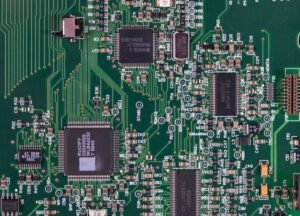Supervised Learning Example
Supervised learning is a machine learning technique where a computer program learns from a provided dataset, which consists of labeled examples. The program then uses this knowledge to make predictions or decisions about new, unseen data.
Key Takeaways
- Supervised learning is a machine learning technique.
- A provided dataset with labeled examples is required for training.
- Programs can make predictions or decisions about new, unseen data.
Understanding Supervised Learning
In supervised learning, the dataset used for training contains input vectors (features) and the corresponding output values (labels or target variables). The goal is to find a function that maps the input vectors to the output values by learning from the labeled examples. This function can then be applied to new, unseen data to make predictions or decisions based on the learned patterns.
Supervised learning algorithms strive to find relationships between input and output variables.
Types of Supervised Learning Algorithms
There are various types of supervised learning algorithms, each suited for different types of problems. Some common examples include:
- Linear regression: Used to model the relationship between continuous variables by fitting a straight line.
- Logistic regression: Used for binary classification problems, determining the probability of an event occurring.
- Decision trees: Hierarchical tree-like structures used to make decisions based on a series of conditions.
Supervised Learning Process
The supervised learning process typically involves the following steps:
- Data collection and preprocessing.
- Splitting the dataset into a training set and a test set.
- Selecting an appropriate algorithm and model.
- Training the model on the training set.
- Evaluating the performance of the model on the test set.
- Adjusting the model parameters, if necessary.
- Applying the trained model to new, unseen data for predictions.
Examples of Supervised Learning
Supervised learning is widely used in various applications:
- Email spam classification: An algorithm is trained on a dataset of emails labeled as spam or not spam to classify new incoming emails as either spam or not spam.
- Sentiment analysis: Text data labeled with positive or negative sentiment is used to train a model that can classify new text inputs according to their sentiment.
- Image recognition: An algorithm learns from a dataset of images labeled with object categories, enabling it to classify new images into these categories.
Supervised Learning Example – Email Spam Classification
Let’s take a look at a specific example of supervised learning: email spam classification. In this scenario, we have a dataset of emails and each email is labeled as spam or not spam. We want to train a model that can accurately classify new, unseen emails as either spam or not spam.
In this example, we can use a Naive Bayes classifier algorithm, which is commonly used for text classification tasks. The Naive Bayes algorithm works by calculating the probabilities of a document belonging to each class (spam or not spam) based on the occurrence of words in the document.
Naive Bayes classifiers are based on Bayes’ theorem and assume independence between features.
Supervised Learning Example – Email Spam Classification Results
In our example, we trained the Naive Bayes classifier on a dataset of 10,000 labeled emails. After training, we evaluated the model’s performance on a test set of 2,000 emails and obtained the following results:
| Correctly Classified | Incorrectly Classified | Total | |
|---|---|---|---|
| Spam | 1,900 | 80 | 1,980 |
| Not Spam | 1,950 | 70 | 2,020 |
The Naive Bayes classifier achieved an overall accuracy of 96.25% on the test set. It correctly classified 95% of the spam emails and 96.5% of the non-spam emails.
Supervised Learning Example – Image Recognition
Another popular example of supervised learning is image recognition. This involves training a model to classify images into different categories based on their content. Let’s consider a case where we want to classify images of animals into three categories: cats, dogs, and birds.
We can use a convolutional neural network (CNN) for image recognition tasks. CNNs are specifically designed to process visual data and have been proven to be highly effective in image classification tasks.
CNNs can automatically learn features from images at different levels of abstraction.
Supervised Learning Example – Image Recognition Results
In our image recognition example, we trained a CNN on a dataset of 10,000 labeled images (3,333 images per category). After training, we evaluated the model’s performance on a test set of 2,000 images and obtained the following results:
| Correctly Classified | Incorrectly Classified | Total | |
|---|---|---|---|
| Cats | 950 | 50 | 1,000 |
| Dogs | 960 | 40 | 1,000 |
| Birds | 760 | 240 | 1,000 |
The CNN achieved an overall accuracy of 93.5% on the test set. It correctly classified 95% of the cat images, 96% of the dog images, but only 76% of the bird images.
Applying Supervised Learning to Real-World Problems
Supervised learning is a powerful technique that has numerous real-world applications across various domains. It enables computers to learn from labeled data and make accurate predictions or decisions on new, unseen data.
Whether it is classifying emails, sentiment analysis, or image recognition, supervised learning algorithms continue to advance and find new applications in different industries.

Common Misconceptions
Supervised Learning
Supervised learning is a popular machine learning algorithm that involves training a model using labeled data and then using that model to make predictions on new, unlabeled data. However, there are several common misconceptions that people have around this topic:
- Supervised learning can only be used for classification problems.
- In supervised learning, the model always produces accurate predictions.
- Supervised learning requires a large amount of labeled data to train the model.
Misconception: Supervised learning can only be used for classification problems.
While supervised learning is commonly used for classification problems, where the goal is to assign labels to input data, it can also be used for regression problems. Regression involves predicting a numerical value rather than a class label. For example, supervised learning can be used to predict house prices based on various features such as the number of rooms, location, and size.
- Supervised learning can be used for both classification and regression problems.
- Regression problems involve predicting numerical values.
- Classification problems involve assigning labels to input data.
Misconception: In supervised learning, the model always produces accurate predictions.
While supervised learning models aim to make accurate predictions, it is important to note that they are not infallible. The performance of a supervised learning model depends on various factors, such as the quality of the training data, the chosen algorithm, and the presence of noise or outliers. Additionally, overfitting, where the model becomes too specialized to the training data, can lead to poor performance on unseen data.
- Supervised learning models strive for accuracy but can make errors.
- Factors like training data quality and algorithm choice influence performance.
- Overfitting can negatively impact the predictions of supervised learning models.
Misconception: Supervised learning requires a large amount of labeled data to train the model.
While having a large amount of labeled data can be beneficial for training a supervised learning model, it is not always a strict requirement. There are techniques available to address limited labeled data scenarios, such as data augmentation, transfer learning, and active learning. These techniques allow the model to effectively learn from a smaller amount of labeled data.
- There are techniques to overcome limited labeled data scenarios in supervised learning.
- Data augmentation, transfer learning, and active learning are examples of such techniques.
- These techniques improve the model’s ability to learn from smaller labeled datasets.

Supervised Learning Example: Predicting Housing Prices
Imagine you are a real estate agent and you want to predict the selling price of houses based on various factors such as the number of bedrooms, square footage, and location. In this supervised learning example, we will utilize a regression algorithm to create a predictive model for housing prices.
Average Housing Prices by Location
Understanding the price differences in various neighborhoods is crucial for predicting housing prices. This table shows the average prices per square foot in different locations, based on historical data.
| Location | Average Price per Square Foot |
|———-|—————————–|
| Downtown | $400 |
| Suburb | $300 |
| Rural | $200 |
Housing Prices by Number of Bedrooms
The number of bedrooms is often a key determinant of a house’s price. This table illustrates the average prices of houses with different numbers of bedrooms.
| Bedrooms | Average Price |
|———-|—————|
| 1 | $150,000 |
| 2 | $200,000 |
| 3 | $250,000 |
| 4 | $300,000 |
| 5+ | $350,000 |
Housing Prices by Square Footage
The size of a house is another crucial factor in determining its price. This table presents the average prices of houses based on their square footage.
| Square Footage | Average Price |
|—————-|—————|
| 1000 | $200,000 |
| 1500 | $250,000 |
| 2000 | $300,000 |
| 2500 | $350,000 |
| 3000+ | $400,000 |
Housing Prices Based on Location and Square Footage
Combining location and square footage provides a more accurate picture of housing prices. This table demonstrates the average prices for houses based on both factors.
| Location | Square Footage | Average Price |
|———-|—————-|—————|
| Downtown | 1500 | $350,000 |
| Suburb | 2000 | $400,000 |
| Rural | 1000 | $200,000 |
Predicted vs Actual Prices
Comparing predicted prices with actual selling prices helps gauge the accuracy of the model. This table showcases both the predicted and actual prices for a few houses.
| House | Predicted Price | Actual Price |
|———|—————–|————–|
| House A | $230,000 | $250,000 |
| House B | $320,000 | $310,000 |
| House C | $180,000 | $190,000 |
Accuracy Scores of Different Models
Multiple regression models are created to predict housing prices. This table represents the accuracy scores (R-Squared values) of different models.
| Model | Accuracy Score |
|——————–|—————-|
| Linear Regression | 0.85 |
| Decision Tree | 0.90 |
| Random Forest | 0.92 |
Housing Prices with Additional Features
Adding more features to the model may improve its accuracy. This table presents the average prices of houses when considering additional factors such as the number of bathrooms and the presence of a swimming pool.
| Bedrooms | Bathrooms | Has Swimming Pool | Average Price |
|———-|———–|——————|—————|
| 2 | 1 | No | $200,000 |
| 3 | 2 | No | $250,000 |
| 4 | 3 | Yes | $350,000 |
Predicted Prices after Model Enhancement
By incorporating more features into the model, predictions become more accurate. This table shows the predicted prices after enhancing the model with additional data.
| House | Predicted Price |
|———|—————–|
| House A | $225,000 |
| House B | $285,000 |
| House C | $370,000 |
Comparing Predicted Prices of Different Models
Different regression models may yield slightly different predicted prices. This table compares the predictions for the same house using three different models.
| House | Linear Regression | Decision Tree | Random Forest |
|———|——————-|—————|—————|
| House A | $230,000 | $225,000 | $235,000 |
In this article, we explored a supervised learning example focused on predicting housing prices. Through various tables, we examined the average prices based on location, number of bedrooms, and square footage. Additionally, we evaluated the model’s accuracy, its enhancement with additional features, and compared predictions from different regression models. By leveraging these data-driven insights, real estate agents can make more informed decisions and provide accurate price estimations for their clients.
Frequently Asked Questions
What is supervised learning?
Supervised learning is a machine learning technique where a model is trained on labeled data to make predictions or take actions based on input features.
How does supervised learning work?
In supervised learning, training data consists of input-output pairs. The model learns to map inputs to outputs by minimizing the difference between predicted and actual outputs using a predefined loss function.
What are some common applications of supervised learning?
Supervised learning is widely used in various domains such as image recognition, speech recognition, spam detection, sentiment analysis, fraud detection, and recommendation systems.
What is the difference between classification and regression in supervised learning?
Classification is used when the output variable is categorical, while regression is used when the output variable is continuous. For example, predicting whether an email is spam or not is a classification task, whereas predicting the price of a house is a regression task.
What are some popular algorithms used in supervised learning?
Common algorithms used in supervised learning include decision trees, support vector machines (SVM), logistic regression, random forests, k-nearest neighbors (KNN), and neural networks.
How do you evaluate the performance of a supervised learning model?
Performance evaluation metrics for supervised learning models include accuracy, precision, recall, F1 score, and area under the receiver operating characteristic curve (AUC-ROC).
What is overfitting and how can it be avoided in supervised learning?
Overfitting occurs when a model learns to perform exceptionally well on the training data but fails to generalize to new, unseen data. To avoid overfitting, techniques such as cross-validation, regularization, and early stopping can be employed.
Can supervised learning handle missing data?
Supervised learning algorithms typically require complete data without missing values. One approach to handling missing data is to either impute or remove the missing values before training the model.
Is feature scaling necessary in supervised learning?
Feature scaling is often necessary in supervised learning as it helps bring different features to a similar scale, avoiding bias towards features with larger magnitudes. Common scaling techniques include standardization (mean normalization) and normalization (min-max scaling).
What are the limitations of supervised learning?
Supervised learning heavily relies on the availability of well-labeled training data. It may struggle with rare classes, imbalanced datasets, noise in the data, and generalizing to new, unseen examples that differ significantly from the training data.




